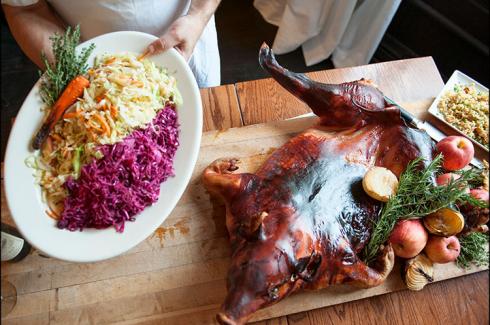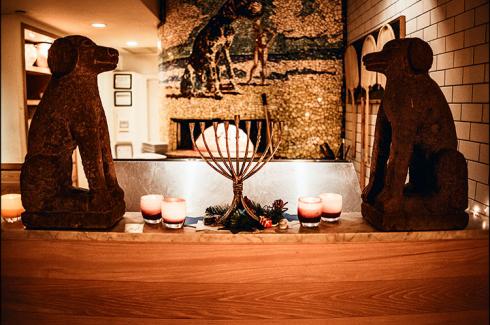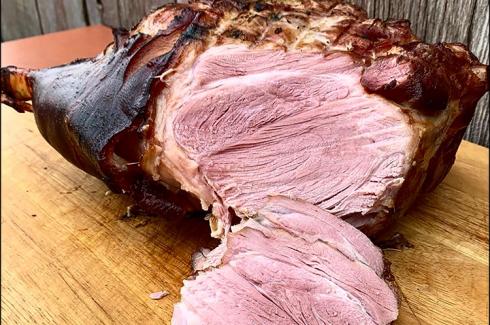During a conversation at his studio in East Hampton’s Northwest Woods, Gus Yero talked about an “aha” experience. When he was taking courses at the Art Students League, one of his teachers was Larry Poons, a prominent abstract painter.
“He taught us how to see, how to just be visual about what is actually happening. And he stressed that it was all about color. I’ve stayed with that until today. Because you can go on and on about what you’re going to paint. But you’re going to paint color. That’s what painting is all about.”
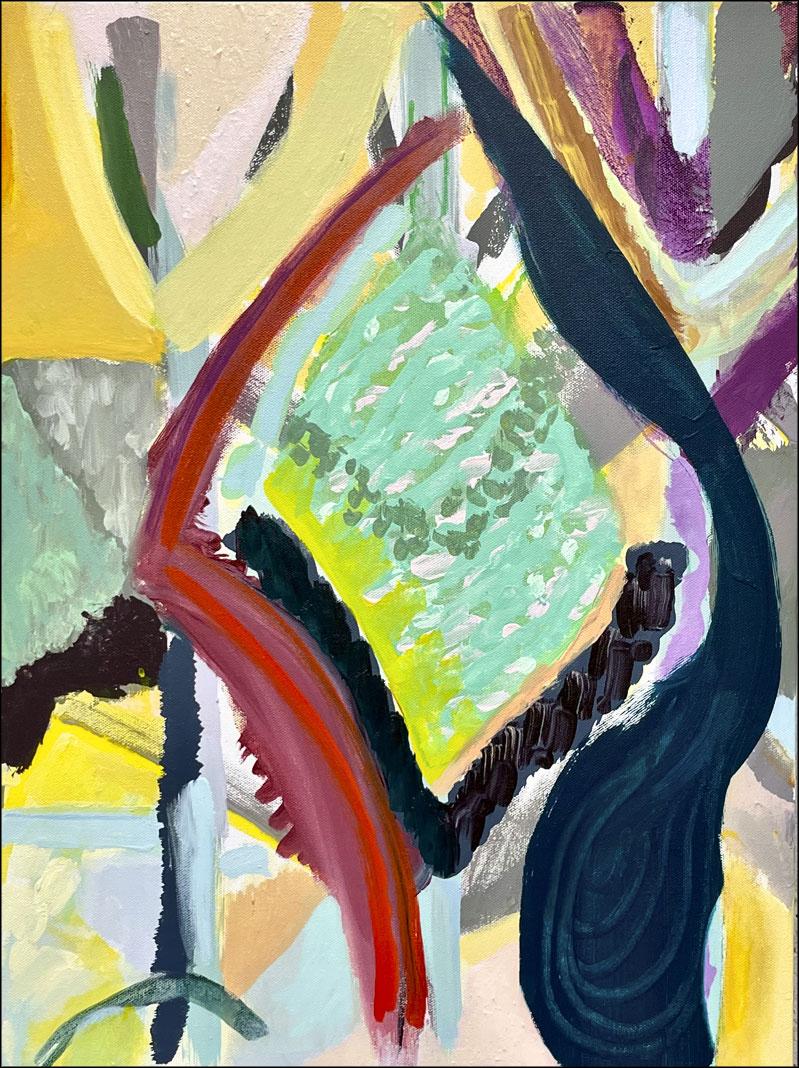
Color has figured prominently in another area of his life, but more on that later. The path to painting, as is so often the case, was circuitous. He was born in New York City and grew up in Greenlawn on Long Island’s North Shore.
“Art has always been a part of my life. My father would bring home a pile of computer paper, and I would isolate myself in my room and draw constantly. And then my room became a collage of my art and things that I found.”
This continued through grade school and high school, and he admitted his teachers admired his artwork. His father painted as a hobby but, while supportive, his parents didn’t quite understand his art.
Once in high school he was more focused on performing arts. “I was always a theater kid in school. I started practicing dance at 16 and decided that was what I wanted to do. It just felt so amazing.” He continued to draw and take art classes, but it was dance that captivated him. “I studied ballet, modern, and jazz. I had most of the body parts for ballet, but not all of them. I didn’t have good feet.”
He was a member of a dance company on Long Island that did educational programs in schools. They performed in Huntington at Heckscher Park and the PAF Playhouse, “and we did a performance with the Joffrey Ballet, which was pretty amazing. I was 19 or 20.”
While he wanted a career in dance, his mother suggested that, because he had two uncles who owned hair salons, he get his cosmetology license in order to have something to fall back on. While he was still teaching dance at schools in Northport and Huntington, he got his license and moved into New York City, where he was hired at a salon as an assistant for a colorist. That, too, was all about color.
Dance went aside when he became a colorist, which he did for 30 years. He was with the Pierre Michel Salon in the city and more recently with the Eddie Arthur Salon, which has shops in New York and Bridgehampton. Even though art still took a back seat, “my clients loved the idea of an artist doing their hair color.” He eventually gave up his career as a colorist, even his private clients.
But he was still working in a salon when, in his mid-30s, he told his therapist that his goal was to be an artist, and that led him to the Art Students League. In addition to Mr. Poons, he studied with Joanna Pousette-Dart, William Scharf, and Bruce Dorfman.
When he started studying with Ms. Pousette-Dart, an abstract artist best known for her shaped canvases, he was painting “little things. She said, you don’t have to do that. She stressed that the first time you approach a surface, whether paper or canvas, every mark you make should come from you. Don’t be gratuitous with any of your art making. I learned a lot from that, just approaching the canvas. I started doing very gestural painterly work and working a lot with texture. With the paint as a fluid material.”
While most of Mr. Yero’s paintings are abstract, he moves freely from small scale to large and from vibrant, almost dazzling abstract compositions to the occasional bird, sunset, or still life. He says the latter works give him a fresh approach to his other paintings. “Again, it’s about color, so I don’t worry about subject matter.”
The same applies to the density of paint. Many of his paintings are thickly impastoed, with a visually raised, almost sculptural effect, while in others, such as “The Ranch,” the paint is applied so thinly that the texture of the canvas is visible.
Asked to describe his process, the first word is “nature. Just being here is inspirational.” The house he shares with his husband, George Singer, is deep in the woods and a stone’s throw from Cedar Point Park. They moved to East Hampton in 1997, closer to the village, but bought their current home three years later. “People kept saying, you’re so far from town. I don’t mind that. This is beautiful.”
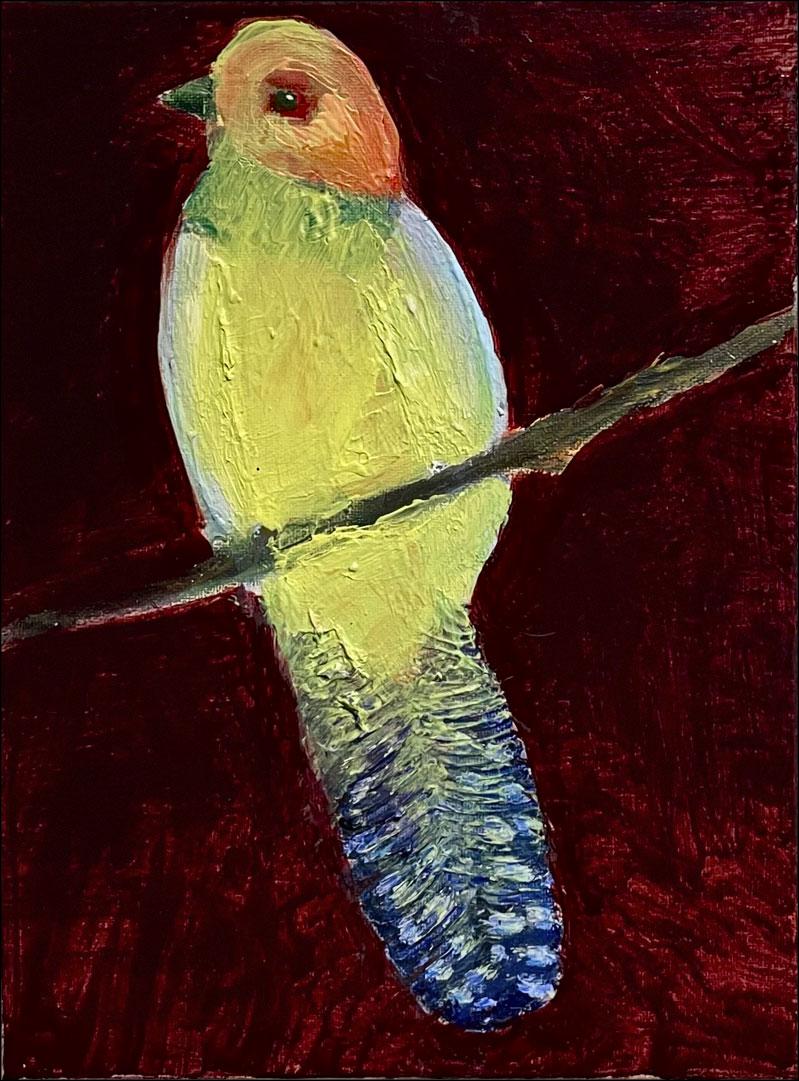
But anything can be a source of inspiration. He even told a visitor, “I may do a striped painting after seeing your shirt. Sometimes I’ll take a photo. There was a woman at a party with this gorgeous blue dress on, the color was so intense that I snapped a picture of it. I thought I had to do something with the feeling of that blue.”
Other times he will approach a painting not knowing where it’s going to go. “I don’t want to be too directional, like this is what I want to paint. So I’ll approach it with just texture, filling up the space. And then just allowing it to talk back to me visually. Just get the paint on there and get a sense of how the colors are reacting to each other. Thick or thin, warm tones or cool, you can do anything with layers of color.”
En route to his basement studio there is a wall hung salon-style with artwork he and Mr. Singer have collected. They are especially drawn to self-taught artists, and the wall features work by Mose Tolliver, Thornton Dial, Clementine Hunter, and Aaron Birnbaum, among others. “Self-taught artists are very inspirational. Larry Poons would always say, paint what you know, and you can see that is exactly what self-taught artists do.”
As for living with another painter, Mr. Yero said, “Our styles are very different, so that helps. George has a very good eye, and I’ll ask if it looks good, or if I should stop here. We’ll tell each other. And it’s good to fail. I learn as much as I do when I think I succeed as when I fail with a painting. There’s nothing better than saying I’m just going to do this until I fall on my face. Why not? It’s the risk you take.”


